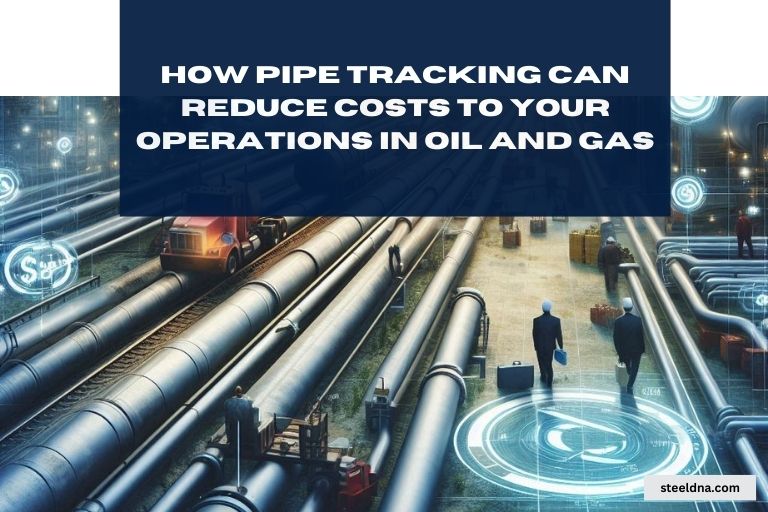Introduction
Hurricanes pose a serious threat to the oil and gas industry, especially for operations in coastal and offshore areas. With extreme weather events becoming more frequent, ensuring the safety of workers and infrastructure is critical. Proper preparation and response plans can reduce the risks of catastrophic damage, environmental disasters, and loss of life. In this post, we'll explore the key safety concerns that oil and gas companies need to address when a hurricane is on the horizon, and the steps they can take to protect their operations during the storm.
Overview of Hurricane Risks to Oil and Gas Operations
- Offshore Risks- Oil and gas platforms located offshore face significant threats during hurricanes. High winds, rough seas, and strong currents can damage or even destroy rigs and platforms. Equipment can be torn from its moorings, and drilling operations may be compromised. Workers on these platforms are at heightened risk, making evacuation a critical priority. Additionally, the loss or interruption of production can lead to significant financial losses for companies.
- Onshore Risks- Coastal refineries, pipelines, and storage facilities are highly vulnerable during hurricanes. Strong winds can damage critical infrastructure, while storm surges and flooding may lead to operational shutdowns or contamination of stored materials. Transportation routes, including rail and roadways, can also be severely disrupted. These risks can result in prolonged downtime, impacting supply chains and creating additional hazards if facilities are not adequately secured.
- Environmental Hazards- Hurricanes present significant environmental risks to the oil and gas industry. Strong winds, storm surges, and flooding can lead to the release of oil, gas, and chemicals into the environment. Offshore spills can damage marine ecosystems, while onshore, leaks from refineries or pipelines may lead to contamination of soil and water. Addressing these hazards quickly is essential to prevent long-term environmental damage and to comply with regulatory requirements.
Evacuation and Shutdown Protocols
- Evacuating Offshore Workers- Companies move quickly to ensure the safe evacuation of all personnel when a hurricane is approaching. Helicopters and boats transport workers from offshore platforms to secure locations. The safety of the crew is a top priority, and the evacuation process follows strict guidelines to avoid any delays or confusion. Crews prepare for evacuation well in advance, so the process can be completed efficiently when a storm warning is issued.
- Shutting Down Operations- Companies implement a well-established protocol to shut down oil rigs, refineries, and pipelines before a hurricane strikes. This process involves halting production, securing equipment, and isolating critical systems to prevent damage or accidents during the storm. Engineers and operators work together to ensure that all safety measures are in place and that facilities remain secure until it is safe to resume operations.
- Communication Systems- Real-time communication systems keep all teams informed during evacuations and shutdowns. Operators rely on satellite phones, radios, and other technologies to maintain contact with onshore command centers, ensuring that the evacuation process runs smoothly and all procedures are followed. Clear, constant communication prevents misunderstandings and helps coordinate every aspect of the shutdown process, from crew movements to equipment checks.
Structural and Equipment Safety Measures
- Hurricane-Resistant Infrastructure- Oil and gas companies build offshore platforms and coastal facilities to endure strong winds and harsh conditions brought on by hurricanes. These structures use reinforced materials and designs that can reduce the risk of damage during storms. Regular engineering reviews ensure that facilities are up to code and that they continue to meet the highest safety standards. This planning helps companies minimize downtime and damage when hurricanes hit.
- Pre-Storm Inspections- Companies conduct thorough inspections of all critical equipment before hurricane season starts. Maintenance teams check for any potential weaknesses or worn parts that could fail during high winds or heavy rain. This preventive approach reduces the chance of equipment malfunctioning when it is most needed. By addressing issues early, teams ensure the reliability of systems during a storm.
- Backup Power Systems- To prepare for power outages, companies install backup power systems at key facilities. These generators ensure that critical systems, such as pumps and communication devices, remain operational even if the primary power supply goes down. Maintenance crews test these systems regularly to ensure they are ready for emergency use. Backup power reduces the risk of accidents and ensures that recovery efforts can begin as soon as it is safe to do so.
Environmental Protection and Contingency Planning
- Oil Spill Response Plans- Oil and gas companies prepare detailed response plans to address potential oil spills during hurricanes. These plans outline steps to contain and clean up spills quickly to minimize environmental damage. Crews are trained to deploy barriers and other containment measures as soon as a spill is detected, while specialized equipment is used to collect oil from the surface. Having a response team ready ensures that any spill is managed efficiently, reducing the risk of widespread contamination.
- Mitigating Chemical Leaks- Facilities such as refineries and storage tanks must be safeguarded against the risk of chemical leaks during a storm. Regular checks and reinforcements are done to secure storage areas, and safety valves are tested to ensure proper function. In the event of a leak, containment measures such as berms and spill kits are placed in advance to limit the spread of hazardous materials. Ensuring the integrity of storage systems is key to preventing chemical exposure to the environment.
- Coordination with Environmental Agencies- Oil and gas companies collaborate with local and federal environmental agencies to ensure their contingency plans align with broader safety and environmental regulations. Regular meetings and updates keep agencies informed about potential risks and company preparedness. In the event of a hurricane, companies work with these agencies to monitor the impact on local ecosystems and follow recommended guidelines to restore the environment as quickly as possible. This coordination helps create a faster and more effective response.
Post-Storm Recovery and Safety Assessments
- Damage Assessment Procedures- After a hurricane passes, teams immediately assess the damage to facilities and infrastructure. This process involves inspecting rigs, pipelines, and other equipment to identify potential hazards. Workers look for structural weaknesses, leaks, and other safety risks that might have arisen during the storm. The priority is to ensure that everything is secure before resuming operations, reducing the risk of further damage or injury.
- Restoring Operations- Once the damage assessment is complete, companies start the process of restoring normal operations. This involves repairing any damaged equipment, ensuring that power systems are functioning, and checking the integrity of pipelines and storage tanks. Every step is conducted carefully to prioritize safety and prevent accidents. The goal is to return to full productivity while maintaining a secure and stable environment for workers and the surrounding area.
- Worker Safety During Recovery- During the recovery phase, safety measures are heightened to protect workers from post-storm hazards. This includes providing personal protective equipment (PPE), ensuring proper training, and following strict protocols when working around damaged structures. Workers face risks such as unstable platforms, electrical hazards, and contaminated areas, so clear communication and constant vigilance are crucial to prevent accidents.
Compliance with Industry Standards and Regulations
- Hurricane Preparedness Regulations- Oil and gas companies follow strict guidelines set by regulatory bodies to ensure readiness for hurricanes. These regulations cover emergency evacuation plans, equipment inspections, and operational shutdown procedures. Companies must maintain detailed records and regularly update their safety protocols to meet these standards. Failing to comply with these requirements can result in penalties and increased risks to workers and the environment.
- Safety Training for Workers- Companies provide comprehensive safety training to all employees, ensuring that they understand hurricane preparedness protocols. Workers receive instruction on evacuation routes, equipment handling during emergencies, and communication systems. Regular drills help reinforce these procedures, so employees are well-prepared when a hurricane approaches. This training is a critical component of ensuring a safe work environment during storm season.
The Role of Technology in Hurricane Preparedness
- Real-Time Monitoring Systems- Oil and gas companies use real-time monitoring systems to track hurricanes and assess risks. These systems provide up-to-the-minute weather data, helping companies make informed decisions about evacuations and shutdowns. With real-time monitoring, operators can observe storm patterns and quickly respond to any changes. This technology allows decision-makers to prioritize safety and take immediate action to protect personnel and assets.
- Automation and Remote Shutdowns- Automation helps oil and gas companies perform rapid and safe shutdowns during hurricanes. Remote systems allow operators to shut down offshore rigs and other critical infrastructure from safe locations. This reduces the need for manual intervention, keeping workers out of harm’s way. Automated shutdowns also ensure that operations cease in an orderly fashion, minimizing the risk of damage to equipment and the environment.
- Data-Driven Risk Management- Oil and gas companies use historical data and predictive models to prepare for hurricane seasons. By analyzing past storm impacts, they can identify vulnerabilities and strengthen weak points in their infrastructure. Predictive models allow operators to estimate potential damage based on the projected path of a hurricane. With this information, companies can prioritize safety measures and allocate resources efficiently, ensuring better preparation and response.
Conclusion
In summary, ensuring safety during hurricanes in the oil and gas industry requires thorough preparation and adherence to protocols. By focusing on worker evacuation, equipment protection, and environmental safeguards, companies can mitigate risks. Regular inspections, proper shutdown procedures, and collaboration with regulatory bodies play critical roles in maintaining safety standards. Staying vigilant, following best practices, and utilizing advanced technologies will help protect both human lives and the environment during hurricane events.
Popular Articles
Expand your knowledge with these insightful blog posts.

The Economic Benefits of Coil Tracking in Oil and Gas

How Pipe Tracking Can Reduce Costs to your Operations in Oil and Gas

Predictive Maintenance with Coil Tracking: Reducing Downtime and Costs
Subscribe to our Blog
Welcome to our blog! Stay updated with the latest industry trends, tips, and insights. Subscribe now to never miss a post or contact us for collaborations and guest post opportunities.

